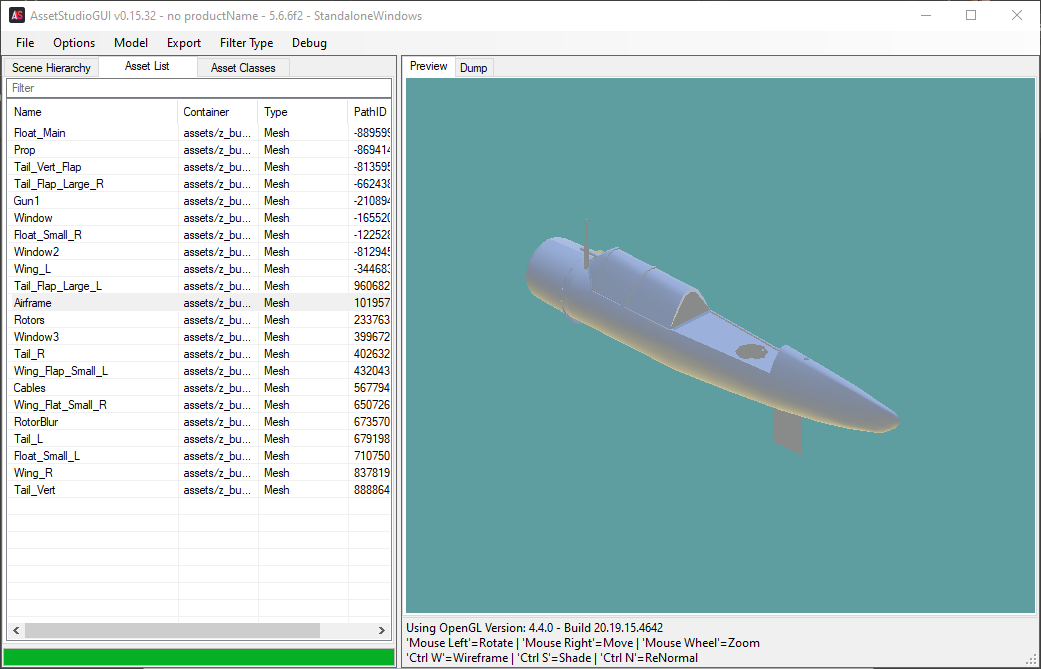

- #How to export obj from unity assets bundle extractor install
- #How to export obj from unity assets bundle extractor free
On a Mac, right-click the player and click Show Package Contents.On a PC, look in the accompanying folder titled _Data.Navigate to where you output the Unity player. Now click on File\Build Settings and ensure the Target Platform is correctly assigned to the platform you are working on. In the assets window, click on Create and add a new folder to your project. This creates a unique access point for users to add their own files to the game. Unlike Resource folders, this directory remains intact and accessible in the Unity player. Like Resource Folders, a Streaming Assets directory can be created by intuitively creating a folder named StreamingAssets in your project’s assets directory. For example, an extremely rare event or hidden object that’s not seen often is not something you’d want to load 100% of the time. Resource folders are useful for loading assets at runtime that would not normally be part of the scene or associated with a GameObject. You can do this by adding the required assets to a folder named Resources in your assets directory. Unlike Asset bundles, resource folders are baked into the Unity Player as part of the game.
#How to export obj from unity assets bundle extractor install
Asset bundles let you deliver the appropriate asset on a per-platform basis while keeping the initial game install size to a minimum.Īsset bundles can contain anything from individual assets to entire scenes, which also makes them ideal for delivering downloadable content (DLC) for your game. Why use asset bundles? When developing cross-platform games, you may need to create more than one texture or model to respect the limitations of the target platform. Generally, you’d host these files on a remote web server for users to access dynamically. Asset BundlesĪsset bundles let you deliver content to your application outside of your Unity build. There are several ways to serve up resources to Unity at runtime, and each method has its place in game development: asset bundles, resource folders, and streaming assets. The game as it stands is a little “meh”, so you’ll add some on-demand assets to let the player customize the game and create some exciting levels. But be warned - there are a number of obstacles you need to avoid or destroy in order to reach your goal. Your goal is to proceed to the glimmering tower of light that constitutes the target tile. Hit play and you’ll find yourself in a little tank in a little arena. Finally, thanks to my kids who helped create some of the custom content! I’ve been dying for find a use for that tank! The royalty-free music later in the tutorial is from the excellent Bensound. Just thought this was interesting.Note: Credit goes to Eric, our venerable Unity Team Leader for the tank model.
#How to export obj from unity assets bundle extractor free
psd directly, very convenient for PS users, I don't know if a raw gimp or paint.NET file work.įeel free to ask if you need more help, I'm not too good at writing tutorials. Nothing is easy, I know.Īssign a basic material with your Satsuma texture to all the parts, and use it to draw directly to the model, or quickly see what you did to the image texture by pressing Alt+R over the image in Blender. You have to know Blender a bit, or take a basic tutorial. I had to rotate and get them in the right place. Now in Blender go to File - Import - Wavefront (.obj) and import all the parts to the scene.

\My Summer Car\mysummercar_DataĬlick the files in UABE and select "Plugins", then "export to. Open "sharedassets4.assets" in UABE, located in. Use Unity Assets Bundle Extractor ( ) (Link updated 0) to get the models. I'll sum up how I did it, hope it is useful to someone out there: I found a way to do it, don't know if others are aware. I've been dabbling with Blender, so I knew the power of having a direct access to the model while texturing.


 0 kommentar(er)
0 kommentar(er)
